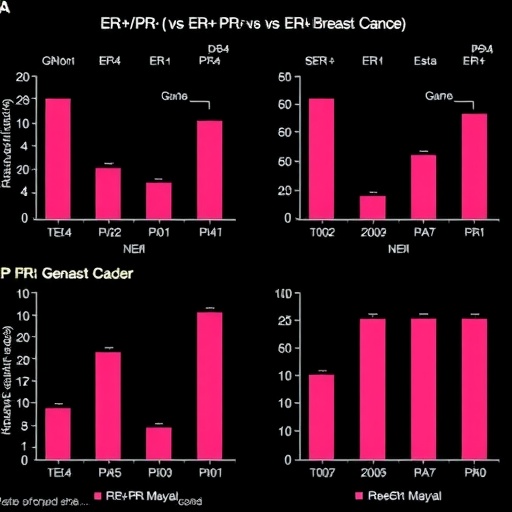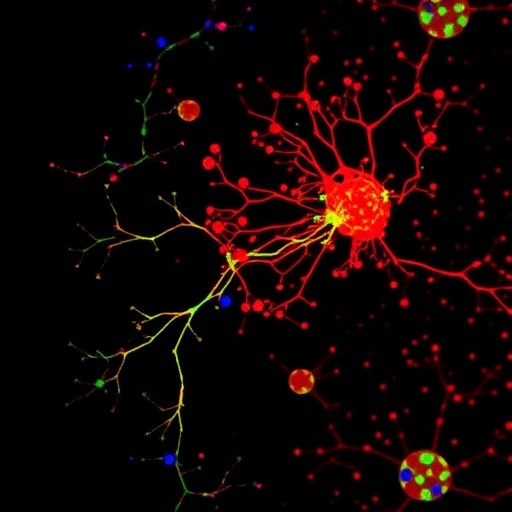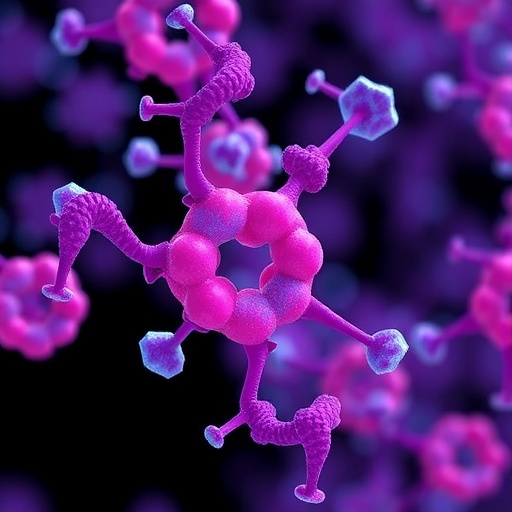
In a groundbreaking study published in BMC Cancer, researchers have unveiled pivotal molecular distinctions between estrogen receptor-positive/progesterone receptor-positive (ER+/PR+) and estrogen receptor-positive/progesterone receptor-negative (ER+/PR-) breast cancers. This comprehensive investigation, integrating proteomic and transcriptomic analyses, sheds new light on the underlying biology that accounts for the differing clinical outcomes observed in these two hormone receptor-positive subtypes. With breast cancer remaining a leading health challenge globally, such insights open pathways for targeted, precision therapies.
Hormone receptor-positive breast cancers have long been recognized for their comparatively favorable prognoses, largely due to responsiveness to endocrine therapies targeting estrogen and progesterone receptors. Yet, it has become increasingly evident that loss of progesterone receptor expression among ER+ breast cancers signals a more aggressive disease course and resistance to conventional hormonal treatments. Despite this, the molecular mechanisms delineating ER+/PR+ from ER+/PR- cancers have remained elusive, impeding tailored therapeutic interventions.
To bridge this knowledge gap, the research team embarked on an integrative approach analyzing fresh tumor samples from carefully characterized patient cohorts. Five ER+/PR+ and five ER+/PR- tumor tissues underwent detailed proteomic profiling to catalog differentially expressed proteins. Complementing this, transcriptomic data encompassing 937 breast cancer cases from The Cancer Genome Atlas (TCGA) allowed for broad validation and correlation with clinical outcomes, including disease-specific and overall survival metrics.
.adsslot_7Y4q6lwDdu{width:728px !important;height:90px !important;}
@media(max-width:1199px){ .adsslot_7Y4q6lwDdu{width:468px !important;height:60px !important;}
}
@media(max-width:767px){ .adsslot_7Y4q6lwDdu{width:320px !important;height:50px !important;}
}
ADVERTISEMENT
Strikingly, survival analyses reaffirmed clinical suspicions: patients harboring ER+/PR- tumors exhibited significantly poorer 5-year disease-specific survival compared to their ER+/PR+ counterparts. This survival pattern was comparable to that observed in ER-/PR- patients, underscoring the aggressive nature linked to the absence of progesterone receptor expression despite maintained estrogen receptor positivity. Such findings heighten the urgency to decode the molecular drivers behind this disparity.
Proteomic assessment unveiled 186 proteins differentially expressed between the two subtypes, comprising 110 upregulated and 76 downregulated candidates in ER+/PR- tumors. Subsequent focal analyses employing Cox proportional hazards regression and Least Absolute Shrinkage and Selection Operator (LASSO) techniques distilled these findings to five key regulatory genes exhibiting significant prognostic value: HPN, FSCN1, FGD3, LRIG1, and TBC1D7.
Delving into these genes’ roles revealed a compelling paradigm—HPN, FSCN1, and FGD3 function as tumor suppressors, their diminished expression likely facilitating tumor progression and endocrine resistance in ER+/PR- cancers. Conversely, LRIG1 and TBC1D7 emerged as risk-associated genes, potentially driving oncogenic pathways and contributing to the poorer clinical outcomes observed. This gene signature offers an unprecedented molecular fingerprint for patient stratification and risk assessment.
By synthesizing these molecular signatures into a risk scoring model, the researchers demonstrated its predictive power in segregating patients into high- and low-risk groups with marked differences in survival probability. Such prognostic stratification is invaluable for guiding clinical decision-making, particularly in tailoring adjuvant treatments to individual tumor biology.
Beyond survival implications, functional enrichment analyses illuminated altered metabolic and signaling pathways underpinning ER+/PR- breast cancer biology. Key pathways such as galactose metabolism, glycolysis/gluconeogenesis, JAK-STAT signaling, and the pentose phosphate pathway were differentially engaged between risk groups. These metabolic shifts suggest potential vulnerabilities that could be exploited therapeutically to disrupt tumor growth and survival.
Immunologically, tumor microenvironment differences were notable, with high-risk groups showing altered infiltration patterns of immune effectors including CD8+ T cells and M1 macrophages. These immune landscape variations potentially influence tumor immune evasion, therapy response, and metastatic propensity. Understanding these nuances could inform the development of immunomodulatory strategies tailored for ER+/PR- breast cancer.
Crucially, drug sensitivity predictions derived from the OncoPredict algorithm indicated divergent therapeutic susceptibilities. Low-risk patients appeared more responsive to endocrine therapies, such as fulvestrant, reinforcing the continued utility of hormone blocking agents in this subgroup. Conversely, high-risk patients demonstrated enhanced sensitivity to chemotherapeutics like docetaxel, paclitaxel, and vinorelbine, advocating for chemotherapy consideration in these cases.
Supporting these in silico predictions, clinical data collected from 97 hormone receptor-positive breast cancer patients undergoing neoadjuvant chemotherapy exhibited higher rates of favorable pathological response (Miller-Payne scores of 4 and 5) in ER+/PR- patients compared to ER+/PR+ patients, consistent with the proposed chemoresponsiveness of the more aggressive subtype.
The study’s thorough validation using external Gene Expression Omnibus (GEO) datasets (GSE21653, GSE20685, and GSE42568) solidifies the robustness of their findings across diverse patient populations. Such rigorous cross-validation enhances confidence in the gene signature’s applicability in varied clinical contexts.
Collectively, this integrative proteomic-transcriptomic framework not only demarcates the molecular hallmarks distinguishing ER+/PR+ and ER+/PR- breast cancers but also lays a foundation for precision oncology. The identification of key genes and pathways offers actionable targets, while the risk scoring system empowers clinicians to customize therapy, balancing endocrine and chemotherapeutic modalities according to individual tumor biology.
As breast cancer management advances towards personalized medicine, insights from studies like this underscore the need to move beyond receptor status as a binary descriptor. Instead, a comprehensive molecular portrait encompassing gene expression, protein dynamics, metabolic pathways, and immune contexture is vital for optimizing outcomes.
Future research built on these findings may explore therapeutic interventions modulating the identified regulatory genes or their associated pathways. Additionally, immunotherapy combinations tailored to immune infiltration patterns observed could revolutionize treatment paradigms for ER+/PR- breast cancer patients.
Ultimately, unraveling the complexities of hormone receptor-positive breast cancer subtypes heralds a new era where molecularly informed strategies enhance survival, mitigate resistance, and improve quality of life. This study marks a significant stride in that direction, translating cutting-edge multi-omic science into clinically meaningful advances.
Subject of Research: Molecular mechanisms differentiating ER-positive/PR-positive and ER-positive/PR-negative breast cancer subtypes, focusing on integrated proteomic and transcriptomic analysis to inform prognosis and treatment strategies.
Article Title: Integrated proteomics and transcriptomics analysis reveals key regulatory genes between ER-positive/PR-positive and ER-positive/PR-negative breast cancer
Article References:
Lu, Z., Yang, J., Feng, Y. et al. Integrated proteomics and transcriptomics analysis reveals key regulatory genes between ER-positive/PR-positive and ER-positive/PR-negative breast cancer. BMC Cancer 25, 1048 (2025). https://doi.org/10.1186/s12885-025-14451-y
Image Credits: Scienmag.com
DOI: https://doi.org/10.1186/s12885-025-14451-y
Tags: aggressive breast cancer subtypesCancer Genome Atlas data on breast cancerclinical outcomes in breast cancerER+/PR+ breast cancerhormone receptor-positive breast cancermolecular distinctions in breast cancerprecision therapies for breast cancerprogesterone receptor expression in breast cancerproteomic and transcriptomic analysesresistance to hormonal therapiestargeted treatments for ER+ cancers





